The German self-propelled howitzers
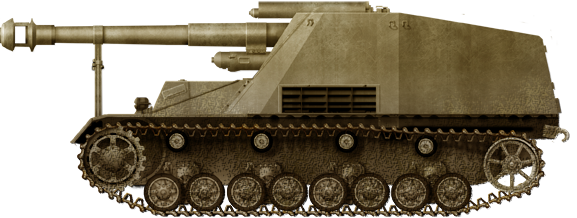 The full designation of this tone- propelled ordnance gun was Panzerfeldhaubitze 18M auf Geschützwagen III/ IV( Sf) Hummel,Sd.Kfz. 165. The German word ‘ Hummel ’ means bumblebee. This armored fighting vehicle had a nasty sting. There were two main types of tone- propelled ordnance in the German Army during WW2. One was fitted with ananti-tank gun and the other with an ordnance howitzer, like the Hummel. A vehicle fitted with an ordnance field howitzer was called a ‘ Geschüetzwagen ’, which is literally restated as a ‘ gun vehicle ’. The letters ‘ Sf ’ stand for ‘ Selbstfahrlafette ’ – tone- propelled carriage. ‘ Panzerfeldhaubitze ’ means armoured field howitzer.
The full designation of this tone- propelled ordnance gun was Panzerfeldhaubitze 18M auf Geschützwagen III/ IV( Sf) Hummel,Sd.Kfz. 165. The German word ‘ Hummel ’ means bumblebee. This armored fighting vehicle had a nasty sting. There were two main types of tone- propelled ordnance in the German Army during WW2. One was fitted with ananti-tank gun and the other with an ordnance howitzer, like the Hummel. A vehicle fitted with an ordnance field howitzer was called a ‘ Geschüetzwagen ’, which is literally restated as a ‘ gun vehicle ’. The letters ‘ Sf ’ stand for ‘ Selbstfahrlafette ’ – tone- propelled carriage. ‘ Panzerfeldhaubitze ’ means armoured field howitzer.tone- propelled ordnance ordnance were developed to enable presto moving attacks to have ordnance support that could keep up with the speed of advancing Panzer Divisions. They could use direct fire mode at targets they could see or, more generally, use circular fire at targets colluded on a chart.
They weren't designed to be in the frontal line or engage in combat with tanks. They were motorized ordnance ordnance that could fire high explosive HE shells over the heads of friendly colors. utmost targets would have been given to the crew as collude grid references by forward observation officers or army units under attack. Quite frequently, the gun crews couldn't see where their shells landed, as the target was so far down. They would have to calculate on the forward bystander to tell them if adaptations had to be made.
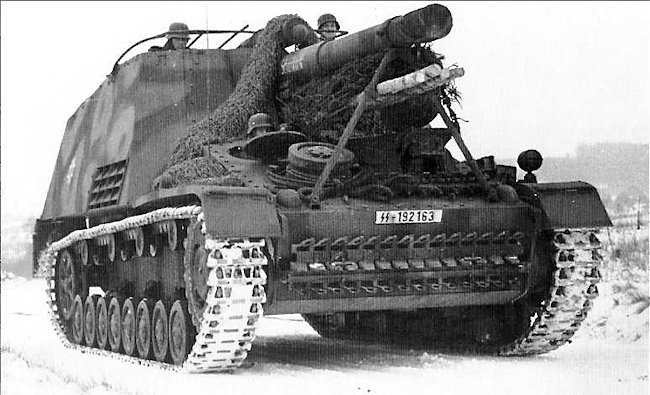
Early production Hummel. Notice the wire rack covering the open fighting compartment.
The open- outgunned reverse design of these tone- propelled ordnance had a number of advantages. The elevated commander’s position when standing in the crew cube, behind the defensive armored guard, meant that he'd a good view on allsides.However, also the crew could use a binary lens range finder telescope that could peak over the top of the armored casement, If there was the trouble of adversary small arms fire.
There was enough room for the crew to be transported towards the battleground whilst defended from small arms fire and shell shrapnel. The vehicle had good mobility and could follow the army nearly anywhere. The gun was hastily to get ready for action and fire on targets than hauled ordnance.
Putting the 15 cms.FH18/1 howitzer on top of a tank lattice was a more effective use of force from the traditional form of German ordnance battery transportation. Indeed in WW2, steed power was still extensively used although tracked vehicles were also employed when available. Each field gun would bear a six- steed platoon to pull the gun and limber. The security, inventories and tackle would be kept in the limber, which was a veritably large box on a brace of bus with seats on the top. Three men would ride on the left hand steed of each brace to control them. The remaining six men of the gun crew would ride on top of the limber. Only a relative many were hauled by the 3 ton halftracks.
Production
By the end of the Second World War in 1945, 705 Hummel 15cm self-propelled artillery pieces and 157 Hummel ammunition trucks had been created. In 1942, the Hummel was created. The manufacturing models did not use the prototype's extremely big muzzle brake. Alkett was given the job, and Deutsche Eisenwerke in Duisberg was hired as the assembly company. The first five Hummels in the production series were finished in February 1943 and put into use in March 1943. They were despatched right away to the Eastern Front to help the Panzer Divisions with artillery. In January 1944, the initial 500-unit order (including the Munitionsträger version with ammunition carrying capability) was fulfilled. The Hummel's new, better design appeared in early 1944. A total of 705 Hummels were reported as completed by the end of March 1945.
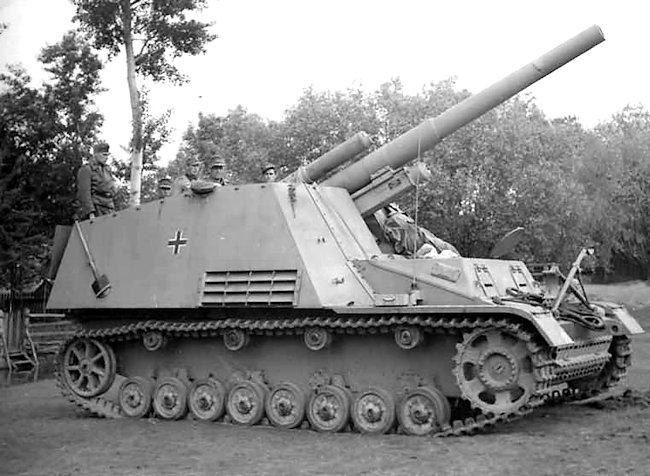
"Late production Hummel 15cm self-propelled artillery gun. Notice that the raised armoured driver’s compartment now covers the width of the vehicle to give the radio operator and driver more room.
The powerful 15cm sFH 18 L/30 heavy field howitzer was mounted on a specially designed Alkett/Rheinmetall-Borsig lengthened German tank chassis called the Geschützwagen III/IV. Components were adopted from both the Panzer III and Panzer IV tank chassis. The more robust final drive wheels, front drive wheels and steering units plus the Zahnradfabrik SSG 77 transmission gearbox were adopted from the Panzer III Ausf.J. The Maybach HL 120 TRM engine with its cooling system, the suspension, and idler with track tension adjustment were adopted from the Panzer IV.
"The engine was moved from the rear of the tank to the centre of the vehicle to make room for the gun and the armored fighting compartment at the back of the SPG. The Geschützwagen III/IV hull was also used for mounting the 88cm anti-tank gun. This self-propelled gun (SPG) was called the Nashorn. Unlike the Nashorn’s armor piercing rounds, the Hummel’s 15cm HE high explosive shells came in two parts. The explosive shell was loaded first, followed by the variable charge canister. This meant that the Hummel could only carry 18 rounds of HE.
When not in use the Hummel’s 15cm howitzer was locked in place by a large "A" frame travel-lock bracket that was mounted on the front hull glacis armoured plate. This stopped the gun moving up and down too violently when the vehicle was travelling across rough undulating ground.
On early versions of the Hummel, the front top of the hull had sloping armor with a raised armored compartment for the driver on the left of the vehicle. The front hull superstructure and driver’s armoured compartment were redesigned in early 1944 and enlarged, covering the whole width of the vehicle. The radio operator and driver now had more space to work in.
The exhaust system was also changed on the later model. It was moved from the original location below the rear double doors. The exhaust mufflers were dropped and the end of the exhaust pipes were cut at a slant away from the tracts to avoid stirring up additional dust.
The Geschützwagen III/IV tank chassis did not have a hull mounted machine gun. Crews were issued with a single MG34 or MG42 machine gun, carried inside the fighting compartment, for self defence.
The Hummel was designed to be operated by a crew of six: commander, driver and four gunners. They were protected by an enclosed high silhouette armored fighting compartment. Although it was open topped, the crew were issued with a thick canvas tarpaulin covers that could be used in bad weather.
In front of the driver a metal wire grid was fixed into position to aid the driver manoeuvring the vehicle in the correct fire position. Some early versions of the Hummel had a metal pole and wire mesh roof framework fitted above the fighting compartment of the vehicle. These were designed to prevent grenades and mines being thrown into the vehicle as it moved through towns and cities.
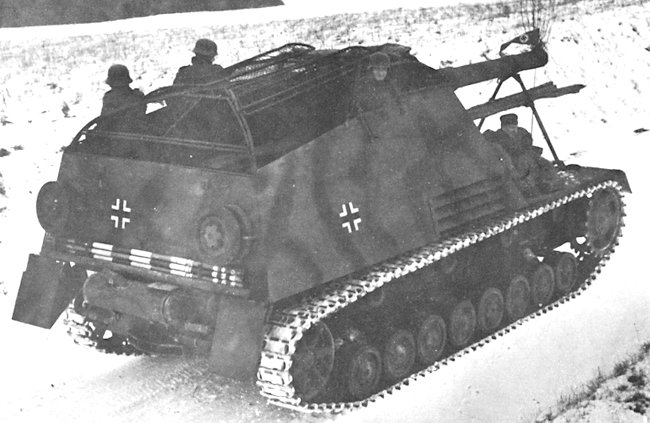
"Early version Hummel fitted with wire mesh top screen to prevent grenades and mines from being thrown into the fighting compartment. Notice the large exhaust muffler/silencer box under the rear hatches. It was removed on the later version.
A metal louvered cover ventilated the engine, but many later versions were fitted with an angled shield that opened upward.
Three aiming stake poles were carried in brackets below the rear door. The gunner would use a large ZE 34 sight. The top lens aperture would point to the rear of the vehicle. The gunner uses this aperture of the sight to locate the aiming sticks that a member of the crew had pounded into the ground at the rear at a known bearing from the vehicle, having used a compass (compasses did not work inside a metal vehicle in 1943). By lining up the red and white fire aiming stake, subtracting 180 degrees, he would be able to work out the correct bearing the gun barrel is pointing towards.
The upper fighting compartment superstructure walls were constructed using 10 mm (0.39 in) thick E11 chrome-silicon armor plates hardened to 153 kg/mm2 for protection against shell fragments. The 30 mm (1.18 in) thick front hull was made using face-hardened FA32 armour plates. The rest of the hull was made out of cheaper rolled SM-Stahl (carbon steel) that was hardened to 75-90 kg/mm2. It took 20 mm (0.78 in) thick plates of SM-Stahl to provide equivalent protection against penetration by SmK (7.92 mm AP bullets) as 14.5 mm (0.57 in) of E11 armour plate.
The early Hummel SPGs used the standard 1943 38cm wide SK18 track that had three smooth metal pads visible on the front face of the track. In winter some vehicles were fitted with track width extenders called Winterketten (winter track). These triangular pieces of metal were bolted on to the outer edge of the track to extend the width of the track and help the vehicle move across snow and mud by spreading the load over a larger area. They were problematic: they fractured and often fell off. In 1944, vehicles started to be fitted with the wider Ostketten (east track) to cope with the conditions found on the Eastern Front. The Winterketten extensions made the SK18 tank track 55cm wide. The one-piece Ostketten was 56cm wide and did not have bits falling off it.
Operational service
The German Army Wehrmacht and SS Panzer Divisions each had their own heavy self-propelled artillery battery as part of their Artillery Regiment battalion. Each battery normally consisted of six Hummels supplied by one Munitionstrager Hummel armored ammunition carrier.
In March 1943, the first batch of eight Hummel SPGs entered service followed by another 46 in April. A few months later they saw their first action during Operation Zitadelle (Citadel) in July 1943 on the Eastern Front. They were used by Panzer-Artillerie regiments on the Eastern Front until the end of the war. A small number were captured by the Soviet Red Army and used against Axis forces in Hungary. Hummels were used in Greece, Italy and North West Europe in 1944.
The authorised establishment of the Panzer Artillery Regiment of the Heer Panzer Division that took part in the Battle of the Bulge, Ardennes Offensive in December 1944 had three Abteilungs (battalions). The second and third battalion comprised of towed 10.5cm, 15cm and 17 cm Howitzers but the first battalion was equipped with artillery self-propelled guns.
1.Abteilung
Stabskompanie (HQ company)
1.Batterien (6x Wespe 10.5cm Artillery SPG)
2.Batterien (6x Wespe 10.5cm Artillery SPG)
3.Batterien (6x Hummel 15cm Artillery SPG)
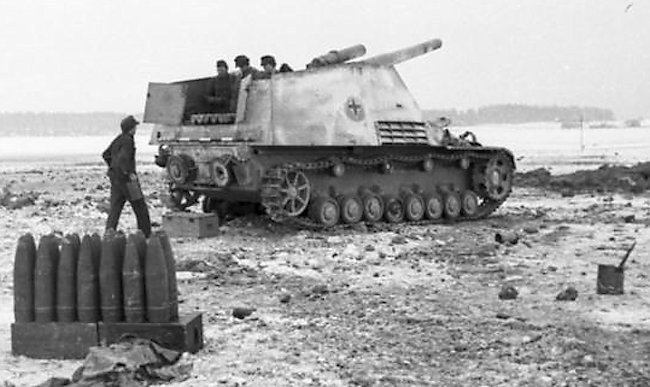
Late version Hummel on the Eastern Front painted with white-wash. The white paint has been rubbed away to expose the German Army black and white identification cross. Notice that there is no rear exhaust muffler/silencer box on the late version Hummel. The gun crewman outside the Hummel is carrying the shorter propellant canisters. It fired two-part ammunition. The HE shell went in the breach first, followed by the propellant canister.
Munitionsträger Hummel
The self-propelled artillery units that operated Hummels needed to be supplied with ammunition regularly. As each vehicle could only carry 18 rounds, they soon depleted their stock of shells.
The gun crew working the Hummel’s 15cm howitzer were protected by the vehicle’s armor plate from small arms fire and high explosive shell shrapnel fragments. Soft skinned lorries carrying ammunition near the frontline were liable to explode in that hostile environment.
The artillery regiments of the Wehrmacht used standard production Hummels, that did not have a gun and were fitted with a 10 mm (0.39 in) armor plate over the gun mount, to carry ammunition. These were called Munitionsträger Hummel. 157 armoured ammunition carriers based on the Hummel Geschützwagen III/IV hybrid tank chassis were constructed.
A flat 9.5mm (3/8th inch) armor plate was bolted to the fighting compartment front to replace the normal gun shield. The cargo space inside the armored compartment was 15 cubic meters (530 cubic feet).
Ammunition was delivered to the working Hummel battery in wicker tube shaped shipping containers, each containing one 42.9-kilogram (94.6-pound) high explosive projectiles. Artillerymen referred to the containers as a Koffer (suitcase). The separate charge cartridges arrived in wooden boxes.
The 15 cm s.FH 18/1 gun
The abbreviation 15 cm s.FH 18 used in the German Army designation of this artillery gun is short for 15 cm schwere Feldhaubitze 18. It was a heavy (schwere) field howitzer (Feldhaubitze). It was towed by horses and used by the German Army in World War II. When they were available, half-tracks were also used to tow these artillery pieces.
In the 1935s the longer barrelled 15 cm sFH 18 heavy field howitzer was introduced, replacing the WW1 15cm s.FH 13. It could deliver 150mm high explosives HE shells at a longer distance.
The gun was designed by Krupp and manufactured at the Krupp factory and also the factories of Rheinmetall. Over 5,000 of these guns were produced from 1933 to 1945. The recoil brake recuperator was positioned below and above the gun barrel to provide maximum possible stability for all gun elevations firing normal charges. A recuperator on an artillery gun is a device employing springs or pneumatic power to return a gun to the firing position after firing.
The HE high explosive shell weighed around 43.5 kg (96 lbs) and was loaded in two parts. This is known as a ‘separate loading’ round. First the explosive projectile shell was put into the gun breach and then the separate charge canister was rammed in behind it. It could also fire smoke rounds and AP armor piercing shells, though they were only effective at short ranges and used for self defence in an emergency.
The gunner had seven different strengths of charge canisters to choose from depending how far away the target was. The gun had a maximum firing range of 13.25 km 13,250m (8.23 miles 14,490 yards) when charge No.7 was used. It had a muzzle velocity of 495 m/s (1,620 ft/s) and a good gun crew could fire four rounds per minute.
Identification
One of the easiest ways of telling the difference between an early and late production Hummel when studying a photograph is to look at the upper front superstructure on the tank chassis. If you can see a separate armored raised box on the left of the vehicle, where the driver would sit, then this is an early production vehicle. If there is a raised box that covers the whole width of the vehicle than this is a late production version.
If you cannot see the front of the vehicle look for a large exhaust muffler/silencer box under the two small hinged doors at the rear of the vehicle. If you see one then you are looking at an early production vehicle. It was dropped from the late production models and two replacement spare bogie wheel holders were put in its place.
It is easy to tell the difference between a 15cm Hummel and 8.8cm Nashorn self-propelled artillery gun even though they both used the same Geschützwagen III/IV tank chassis. The 15cm howitzer used in the Hummel was not fitted with a muzzle brake on the end of the gun barrel. The Nashorn’s 8.8cm gun always had a muzzle brake fitted.
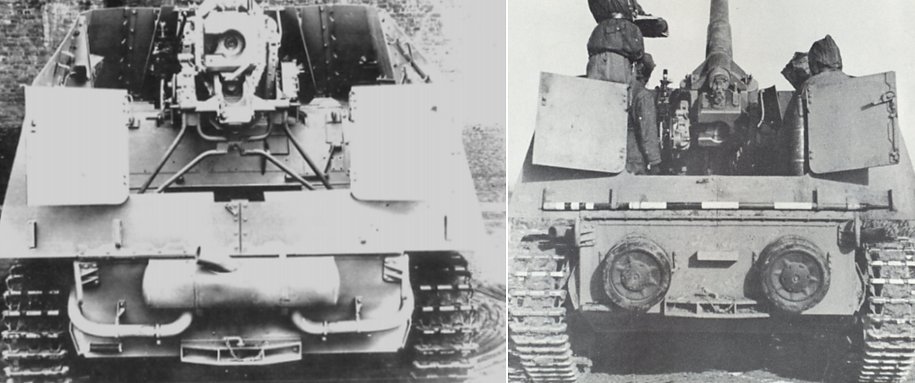
The early production Hummel is on the left with the large exhaust muffler/silencer box affixed under the rear doors and a late version is on the right.
2nd SS Panzer Division ‘Das Reich’ 1944
SS Panzer-Artillerie-Regiment 2
1st Battery 12x 17cm K18 Howitzer
2nd Battery 6x 15cm Hummel SPG
3rd Battery 12x 15cm Howitzer
4th Battery 12x 10.5cm Nashorn SPG
5th Battery 12x 10.5cm Howitzer
40x Motorcycle troops
Specifications |
|
| Dimensions (L x W x H) | 7.17 m x 2.97 m x 2.81 m (23ft 5in x 9ft 7in x 9ft 2in) |
| Total weight, battle ready | 23 tonnes (24.25 tons) |
| Crew | 6 (commander, driver, 4x gun crew) |
| Propulsion | 12-cylinder water cooled Maybach HL 120 TRM 11.9 litre petrol engine, 265 hp at 2600 rpm |
| Fuel capacity | 600 litres |
| Top speed | 42 km/h (26 mph) |
| Operational range (road) | 215 km (133 miles) |
| Armament | 15 cm (5.9 in) s.FH 18/1 L30 howitzer with 18 rounds 7.96 mm (0.31 in) MG 34 machine gun |
| Armor | Front 30 mm (1.18 in), sides 20 mm (0.79 in), rear 20 mm (0.79 in) Superstructure front 10 mm (0.39 in), sides 10 mm (0.39 in) |
| Total production | 705 |
Sources
Panzer Tracts No.10 Artillerie Selbstfahrlafetten by Thanks L. Jentz
German self-propelled guns by Gordon Rottman
Panzer-Grenadier Division Grosssdeutschland by Bruce Quarrie
German self-propelled artillery in world War II and other 150mm self-propelled guns by Joachim Englemann.
The Ardennes Offensive – V Panzer Armies – Central Sector by Bruce Quarrie
Nashorn, Hummel, Brumbar in Action by Ewe Feist
Restricted July 1944 – Allied Expeditionary Force – German Guns – Brief notes and range tables for allied gunners. SHAEF/16527/2A/GCT
Hummel SPGs on Tank-Hunter.com

Hummel Artillery SPG prototype with large muzzle brake.
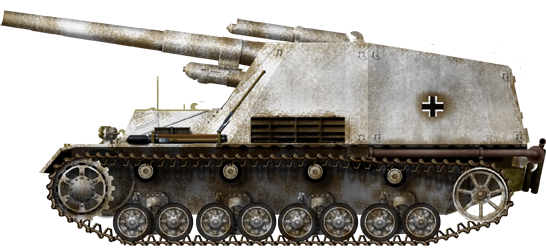
Early version Hummel SPG, Eastern Front, winter 1943
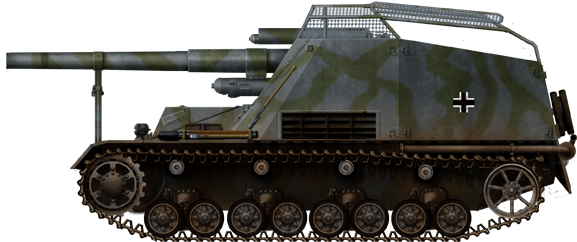
Early version Hummel SPG with wire mesh protective roof, summer 1943
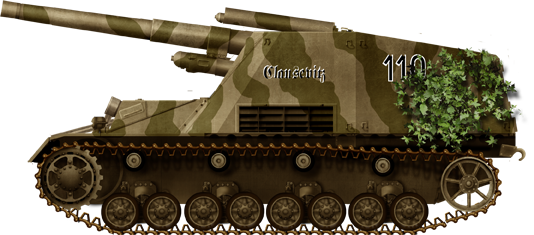
Late production Hummel, 2 SS-Pz Div “Das Reich”, summer 1944.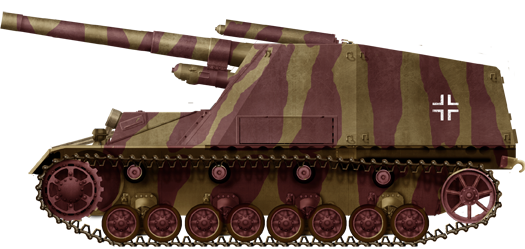
Late production Hummel with armored engine louvered exhaust cover. Summer 1944.
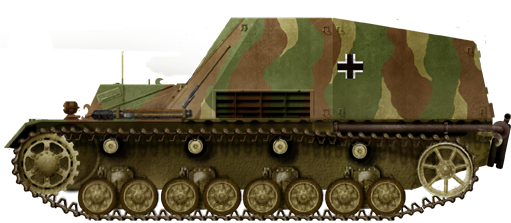
Late production Munitionsträger Hummel ammunition carrier. Summer 1944.
Operational Photographs
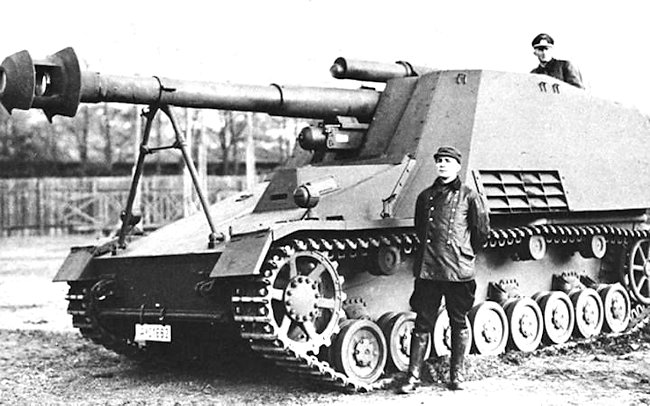
Hummel 15cm SPG prototype with large muzzle brake.
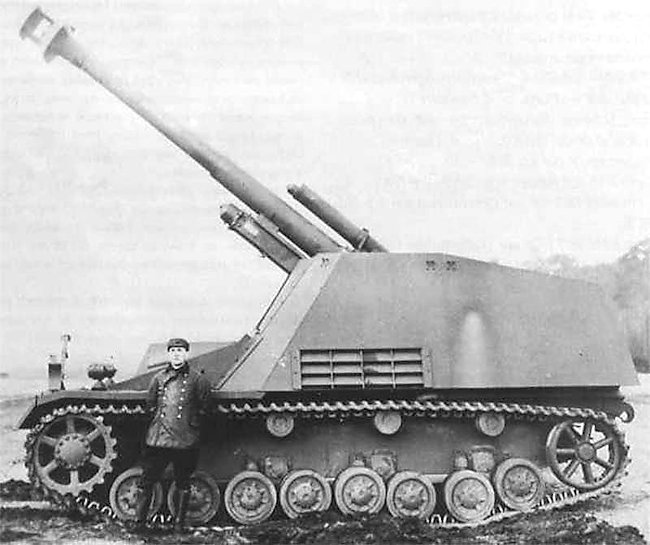
Hummel 15cm SPG prototype with large muzzle brake.
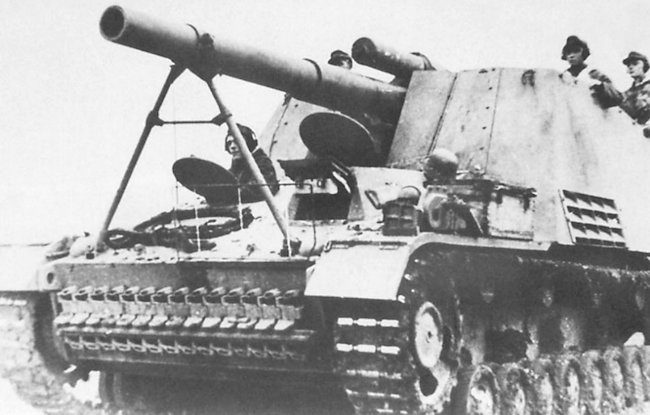
Early production Hummel fitted with driver’s aid firing position wire grid. This SPG has the wider tracks fitted with ice cleats for better grip. It only has one masked headlight.
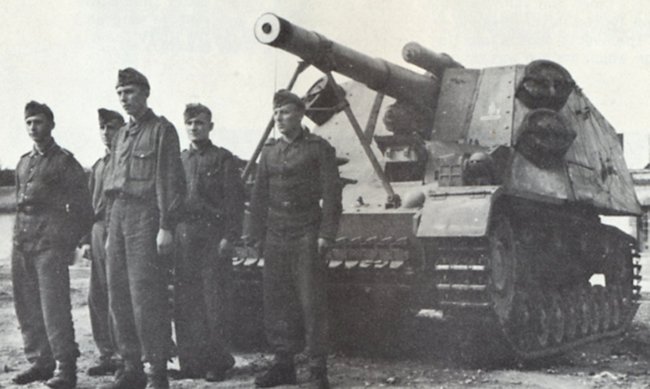
Early production Hummel fitted with four extra pairs of bogey wheels on the front of the front upper armored structure
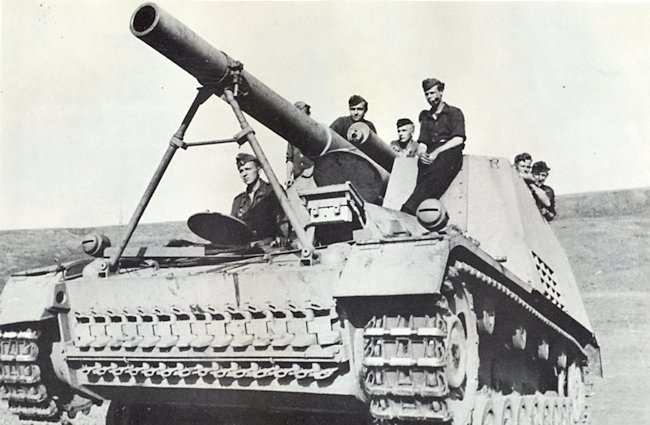
Early production Hummel with two masked headlights and 15cm gun locked into position by an ‘A’ frame travel mount designed to stop the gun moving too violently as the vehicle crosses undulating ground.
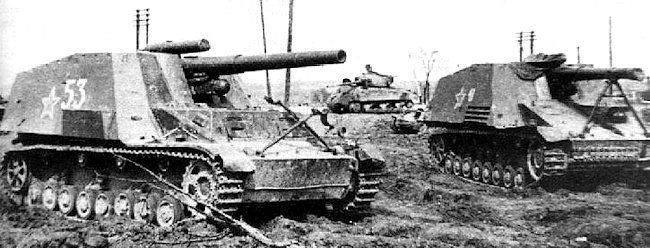
Some Hummel SPGs were captured and used by the Soviet Red Army.
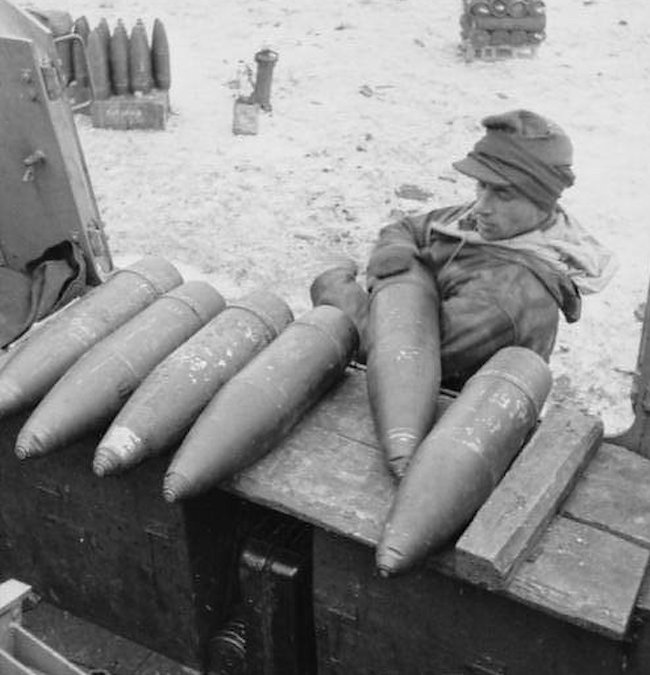
A common field modification by the Hummel gun crews was to place two planks of wood across the rear compartment when the rear hinged doors were open. This was to allow shells to be stacked at the back ready to be grabbed by the loader.
Surviving Examples
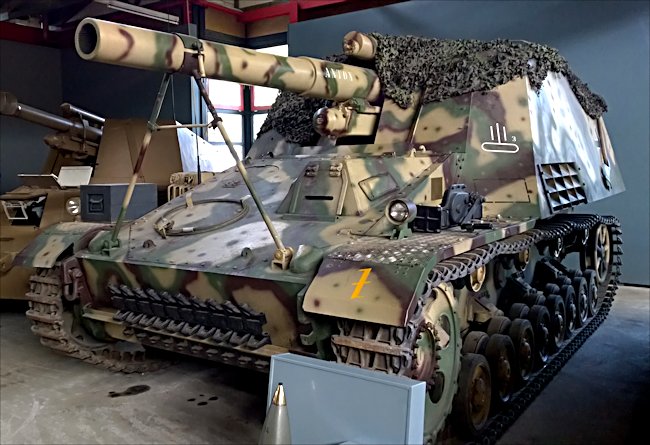
Hummel SPG (early production version) kept at the Deutsches Panzermuseum, the German Tank Museum, Munster, Germany
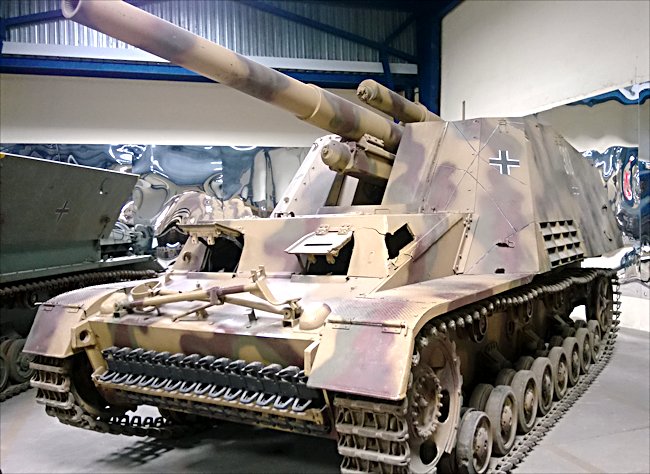
Hummel SPG (late production version) on display at the Musée des Blindés, French Tank Museum, Saumur, France
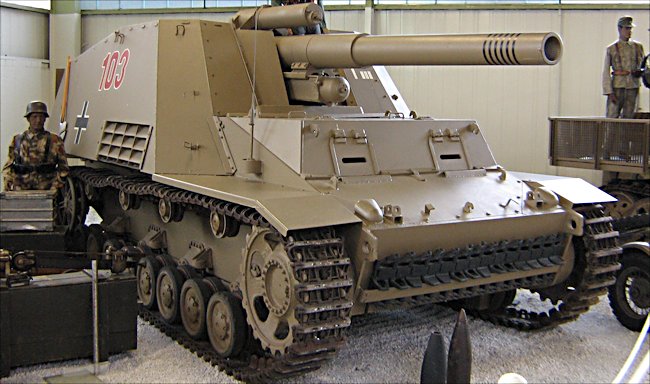
Hummel SPG (late production version) preserved in the Auto and Technik Museum in Sinsheim, Germany.
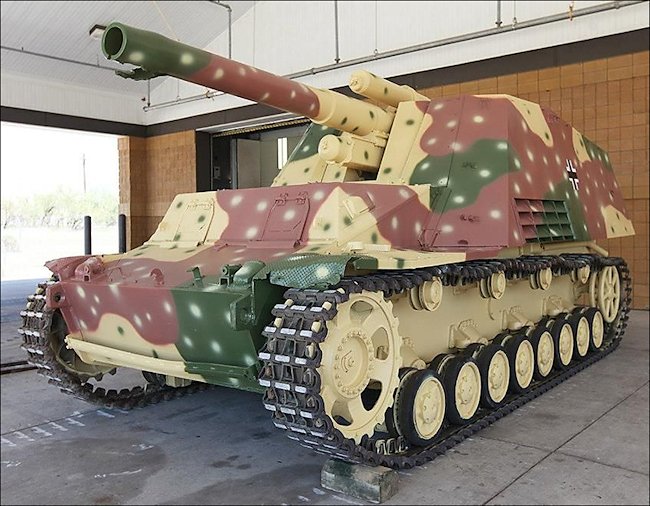
Hummel SPG (late production version) at US Army Artillery Museum, Fort Sill, Oklahoma, USA. The dots are supposed to represent dappled light coming through gaps between the leaves when the vehicle is taking cover from allied fighter bombers, when parked under trees.
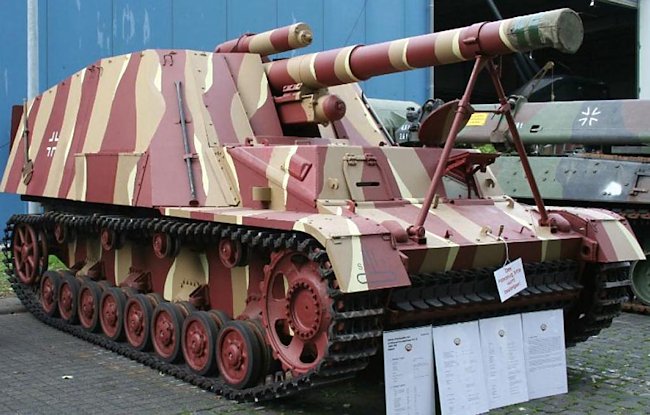
Hummel SPG (late production version) at the German Artillery School, Artillerie Schule, Idar Oberstein, Germany. Notice that the engine exhaust louvered panel has an armoured cover.

WW2 Tanks




























WW2 tanks posters

All Tiger tanks liveries.

Panther liveries and variants

WW2 Armour - All tanks











Tanks aces and single tanks series

Find more there

Museums, Movies, Books & Games
The Tanks and Armor in pop culture
Tanks and armored vehicles in general are only really grasped when seen first person: The mass, the scale, it's all there. Explore also the way tanks were covered in the movie industry, in books and in video games.Movies:
Best tanks movie on warhistoryonline.com
On imdb.com
On bestsimilar.com/
miltours.com
liveabout.com/
watchmojo.com
Video Games:
pcgamesn.com
historyhit.com
levvvel.com
vg247.com/best-tank-games
mmobomb.com/
alienwarearena.com

